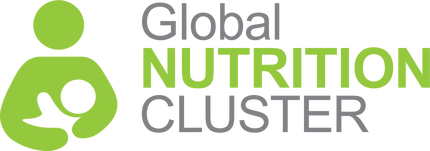Request support on coordination, information management, integration for nutrition outcomes or technical nutrition in emergencies assistance.
التماس الدعم لتنسيق التغذية وإدارة المعلومات والتغذية في حالات الطوارئ
Demander un appui pour la coordination de la nutrition, la gestion de l'information et la nutrition dans les situations d'urgence
Buscar apoyo para la coordinación de la nutrición, la gestión de la información y la nutrición en situaciones de emergencia
Solicite apoio para coordenação em nutrição, gestão de informação e nutrição em emergências
The World Health Organization states that roughly 50% of malnutrition cases are linked to recurrent diarrhea and/or intestinal infections because of people’s lack of access to sufficient and safe drinking water and poor sanitation facilities.
That’s why to mark World Water Day we want to highlight the very important link between nutrition and water and why a water, sanitation, and hygiene (WASH) component should be part of any nutrition response.
The link between nutrition and WASH
Sufficient access to WASH services continues to be a crippling challenge for billions of people across the world. It increases people’s risk of falling ill from preventable water-borne diseases, becoming malnourished, and even dying prematurely. Unsafe drinking water, poor sanitation and inadequate hygiene significantly increase a child’s risk of undernutrition – especially in children two years and under when they are more vulnerable to disease and illness.
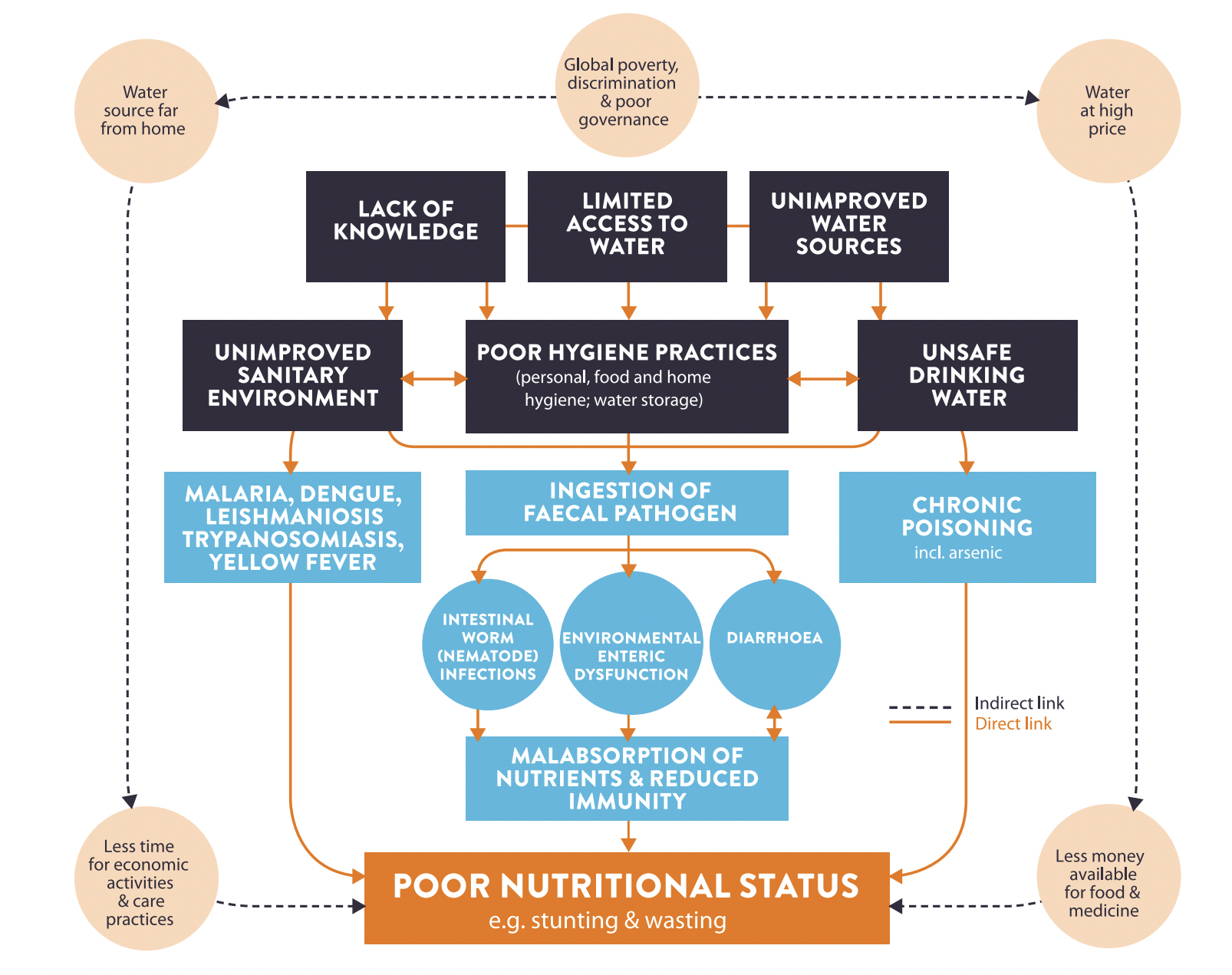
Undernutrition and poor water, sanitation, and hygiene work together to create a vicious cycle. When a child or person is undernourished, they are more susceptible to infection and illness. And when a child or person drinks contaminated water or lacks sufficient sanitation, they can become ill and experience persistent diarrhea, which over time leads to malnutrition because nutrients can no longer be absorbed well enough. Each factor exacerbates the other and it can be difficult to break the cycle.
The only way to break the cycle is to take a holistic approach to addressing nutritional needs that considers the role of WASH to be integral to its success. For example, providing household water treatment products like hand soap and water purification tablets while treating a child or person for Severe Acute Malnutrition (SAM) greatly improves recovery outcomes.
Collaborating is key to saving lives
Many of the same communities that demonstrate high levels of acute malnutrition are the same communities that live in unsanitary conditions without sufficient and safe drinking water. Therefore, a multisectoral approach is essential to achieving any significant and sustainable results.
Inter-cluster/Sector collaboration: Our common objective
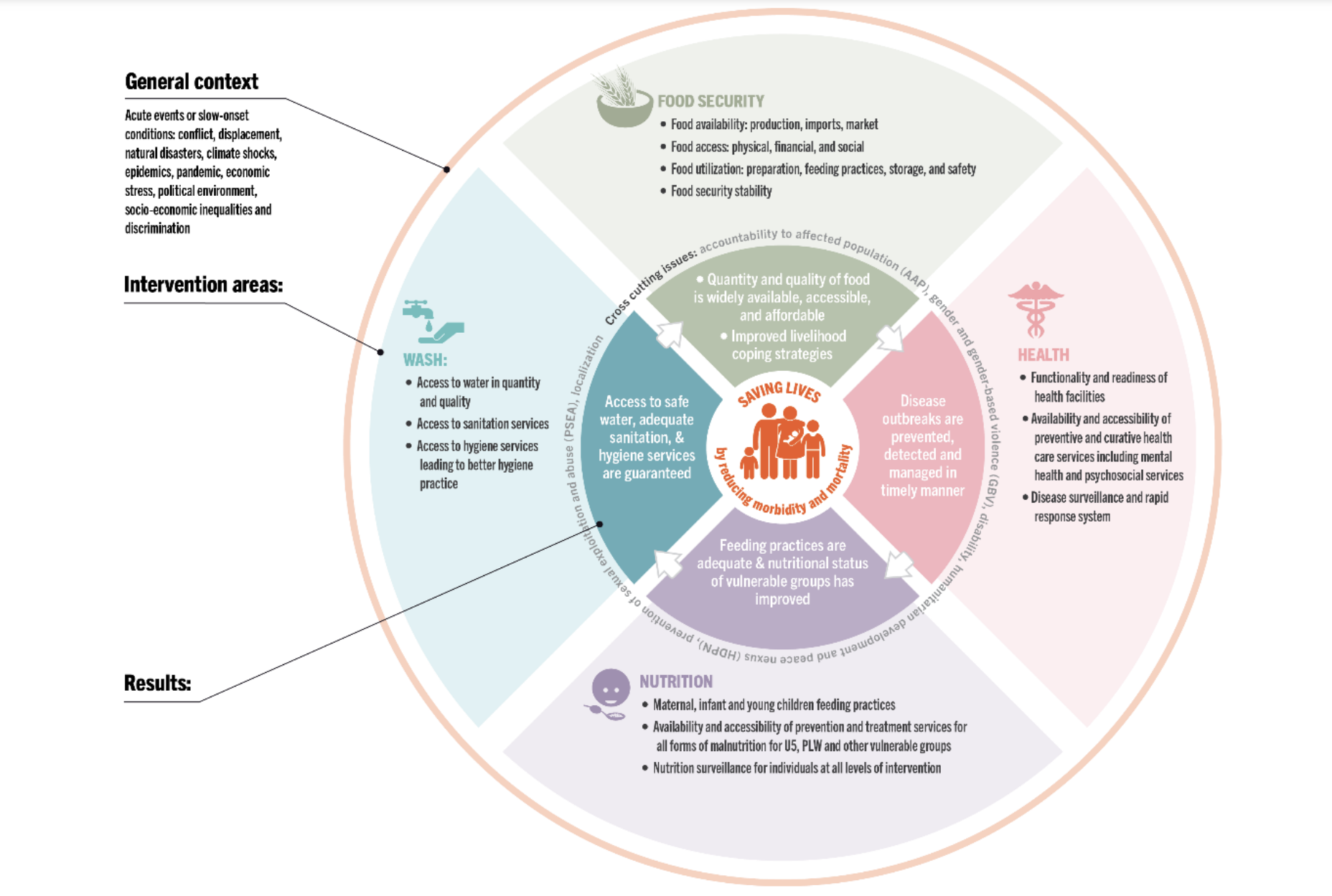
So, how can you ensure that you are considering WASH in your nutrition intervention? Here’s a couple considerations:
Get to know your local WASH sector and WASH partners
If you are not already coordinating closely with your local WASH partners, now’s a great time to start. Your local WASH partners play an important role in ensuring good nutrition because they can help lay the foundation for a healthy environment on which other interventions can be built.
They focus on a number of interventions that aim to improve water quantity and quality, the safe disposal of human excreta, and teach healthy hygiene practices around handwashing, food preparation, and personal hygiene. Working together with WASH partners in your region or community will help you conceive and achieve a more holistic nutrition response.
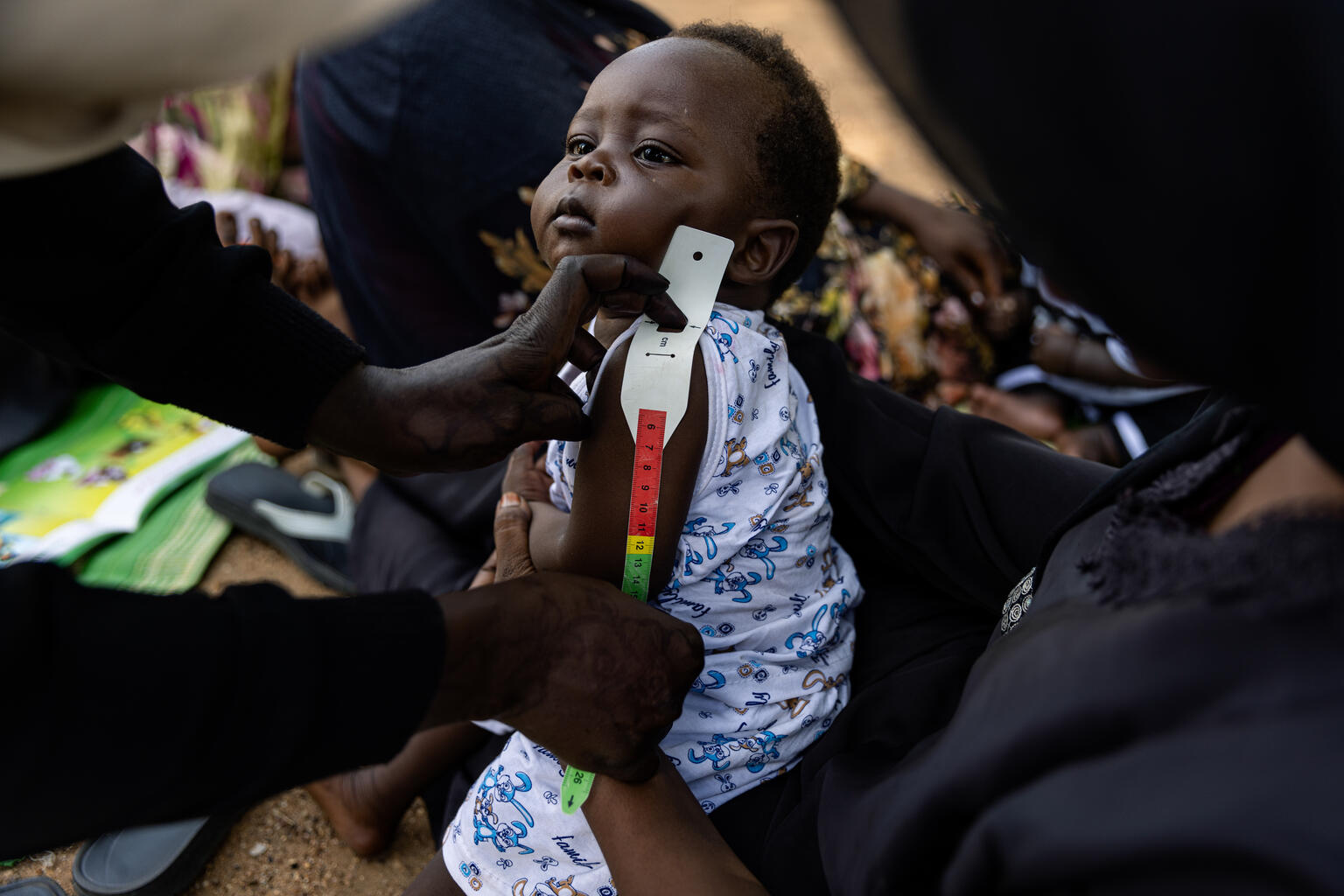
For example, the WASH and Nutrition Clusters in South Sudan worked together to address the underlying issues fueling malnutrition in the Greater Tonj area. For 12 months, they delivered an integrated package of nutrition and WASH interventions, which yielded great results. By the end of the response, more than 75% of the health and nutrition facilities had access to clean water provided by WASH partners, which caused the number of diarrheal cases among children under five years old to drop by 13%. More so, the prevalence of global acute malnutrition in Tonj counties also dropped from 18.4% down to 10.5%.
One of the mothers interviewed at the water point in Alor village shared, “It is so rewarding for us mothers to see our children growing healthier, be better nourished, clean, and have less diarrhea.” The Ministry of Health also recognized that these improvements in children’s health across Warrap State were a direct result of integrating WASH into health and nutrition interventions.
Ensure WASH components are part of your data collection and assessments
When assessing the needs of communities and individuals, consider the data you’re collecting. Are you factoring in people’s living conditions, access to essentials like soap and clean water, proximity to safe drinking water, and available sanitation facilities? If not, you’ll need to consider ways to assess the issues that are contributing to poor nutrition in your region or area more thoroughly and work to address them. These WASH needs must be considered both at the household and community levels – schools, health facilities, community latrines, etc.
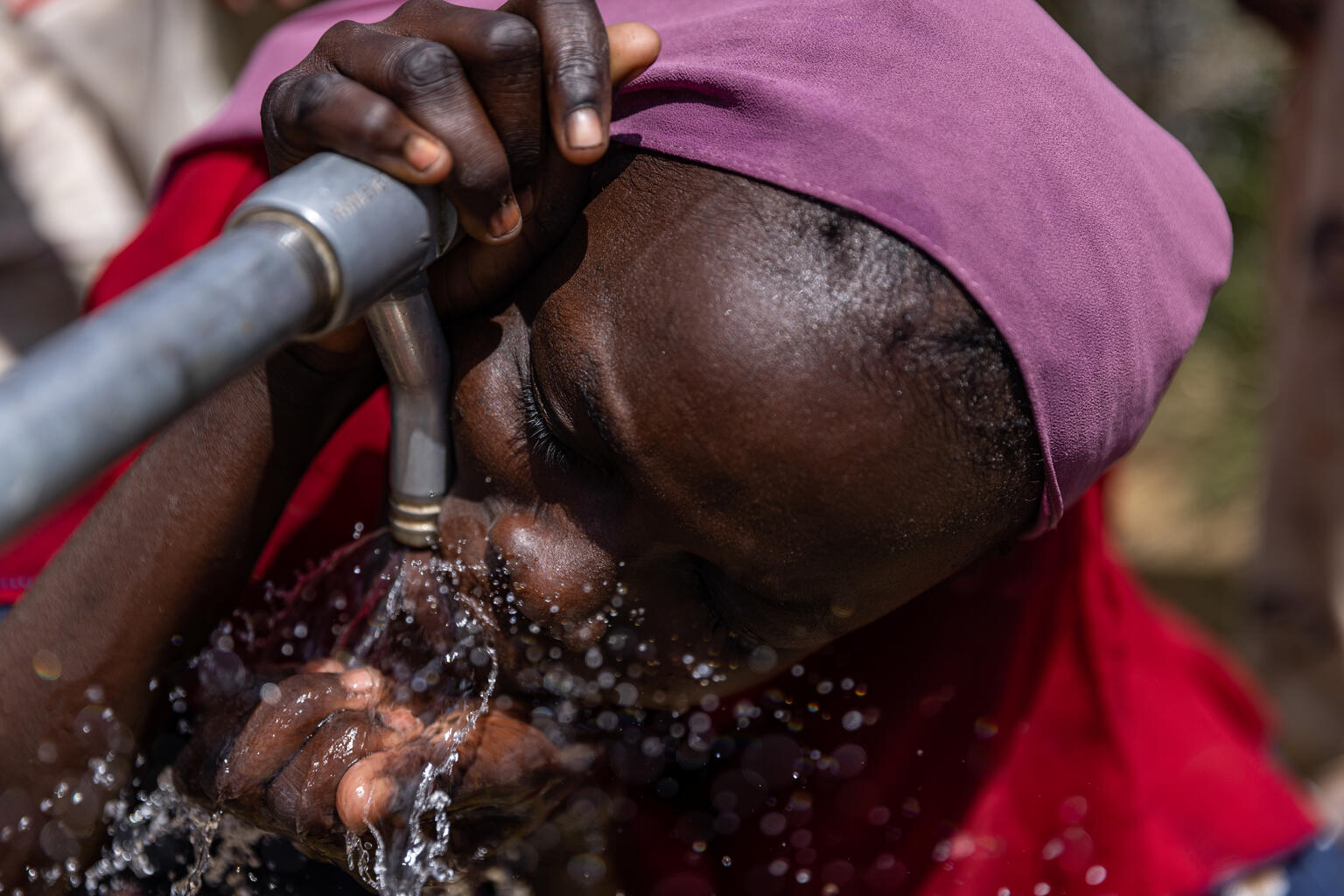
In May, the SMART+ survey methodology will become available with standardized questionnaires on WASH, Food Security, and Health to complement the anthropometry and mortality data collection process. This easy-to-use digital tool will capture real-time information about malnutrition and streamline the entire nutrition survey-to-reporting process.
Familiarize yourself with these useful WASH resources for nutrition actors
There is substantial research out there to support the correlation between WASH and nutrition. Here are few great resources to check out:
>> Impacts of WASH on Acute Malnutrition (ACF France)
>> What is Inter-Cluster/Sector Collaboration (ICSC)?
>> Water and Nutrition: A Framework for Action (World Bank)
Reach out for help
The GNC has a team of nutrition experts and advisors ready and available to support you in your nutrition response. Our team can help you integrate WASH considerations into your intervention and provide in-country and remote support.
The global platform where the four global clusters – WASH, Nutrition, Food Security and Health – collaborate, can also help facilitate, network, and provide technical support for inter-cluster/sector collaboration at the country level.
For nutrition support, you can reach out to Rachel Lozano at rlozano@unicef.org or fill out this short form to request support.
